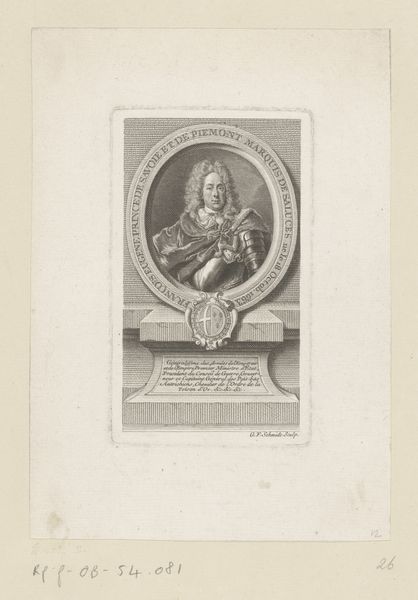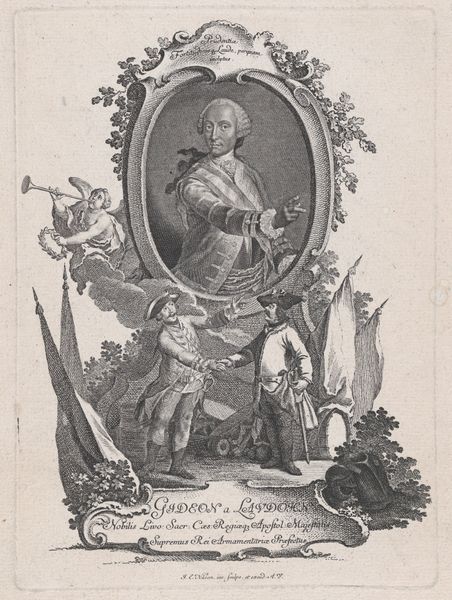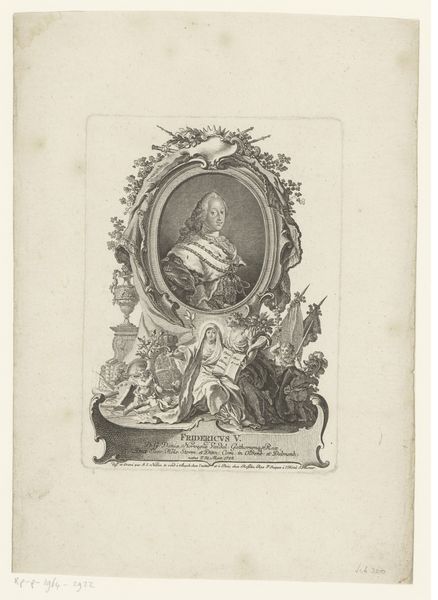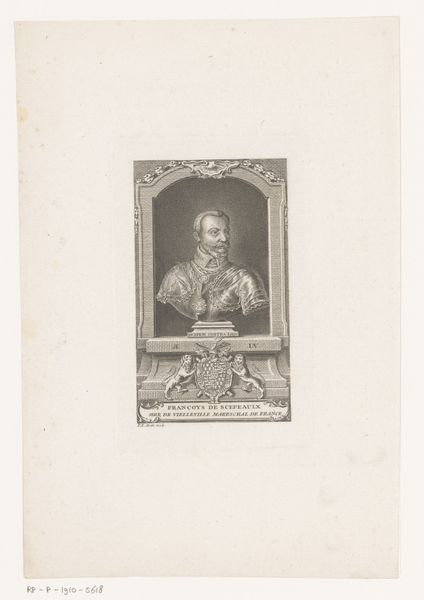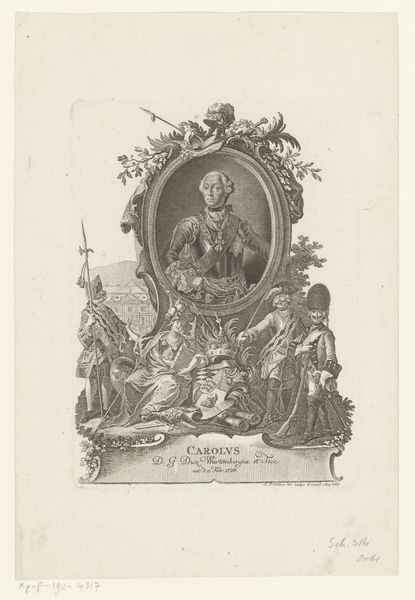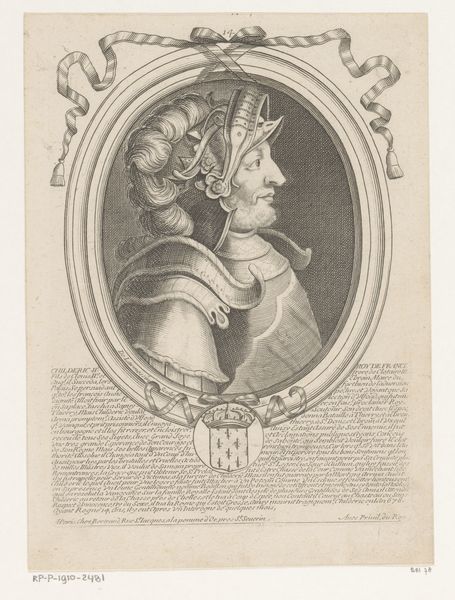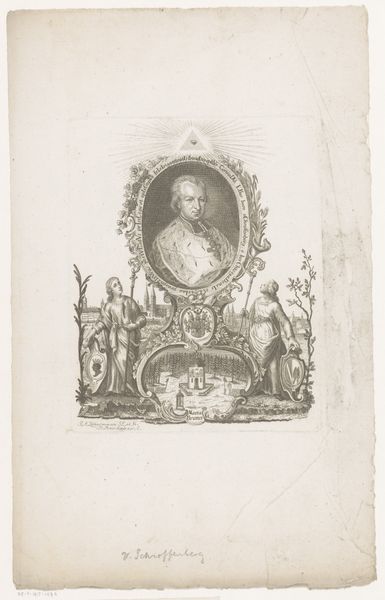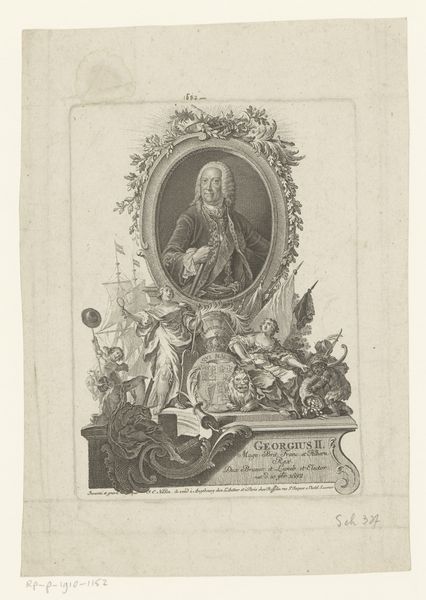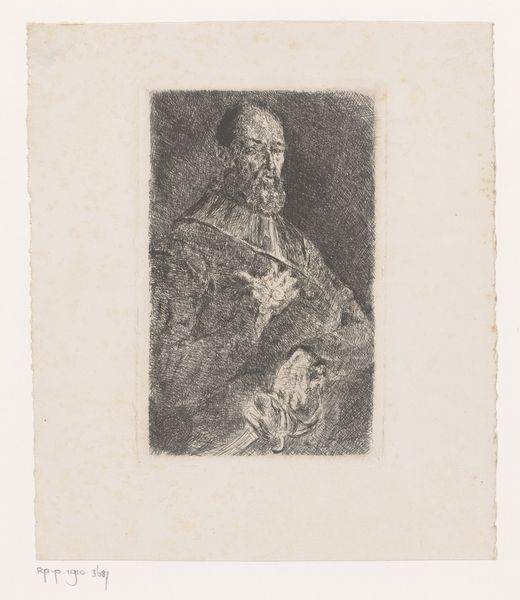
print, engraving
#
portrait
# print
#
11_renaissance
#
history-painting
#
italian-renaissance
#
engraving
Dimensions: 223 mm (height) x 163 mm (width) (plademål)
Curator: What an intriguing image! This is a 1568 engraving of Charles IX, King of France, by Matthias Zündt. Editor: Immediately striking is the portrait's delicate quality. The fineness of the engraved lines creates a sense of restraint and formality. He seems like such a boy. Curator: Absolutely. The use of print allows the image, and therefore the symbolic weight of Charles, to be disseminated widely, strengthening the image of the French monarchy at a time of religious conflict. The inclusion of his age, eighteen, reinforces both his position as a legitimate king and his status as a boy placed in a powerful situation. Editor: The details are incredible – especially within the frame! Look at the cross-hatching that gives his garments a three-dimensionality. I'm drawn to the patterned textile of the jacket; it's a strong element against the smooth paper. The density of the line work contributes to its rich textural appearance. Curator: And don’t forget the symbols themselves! Note the fleur-de-lis at the top. It acts as a direct link to the legacy of French monarchs, and it implies an unbroken chain of authority, stretching back centuries. It reinforces the idea of divine right, of God choosing the French monarchs to rule. Editor: True. Also, consider how the oval format—a common frame for portraits—acts almost like a window onto the subject. His direct gaze and composed posture construct a specific idea about how the monarchy seeks to present itself: authoritative, serene, legitimate. I wonder, what would change about the power dynamic if he were scowling? Curator: A scowl, of course, implies unease and internal conflict, qualities a monarch ideally would seek to avoid projecting in that time. To your point: there is intent to create and disseminate a precise and desired impression. He needs to present stability amid very complex political dynamics. Editor: Right. Analyzing the image—the subject within and the deliberate choices the artist has made with line and space—yields significant historical clues. Curator: Exactly. By investigating symbols, we see beyond likeness and engage with complex negotiations of cultural memory. Editor: Looking closely at the medium then has revealed both meticulous execution and careful propagandizing.
Comments
No comments
Be the first to comment and join the conversation on the ultimate creative platform.

